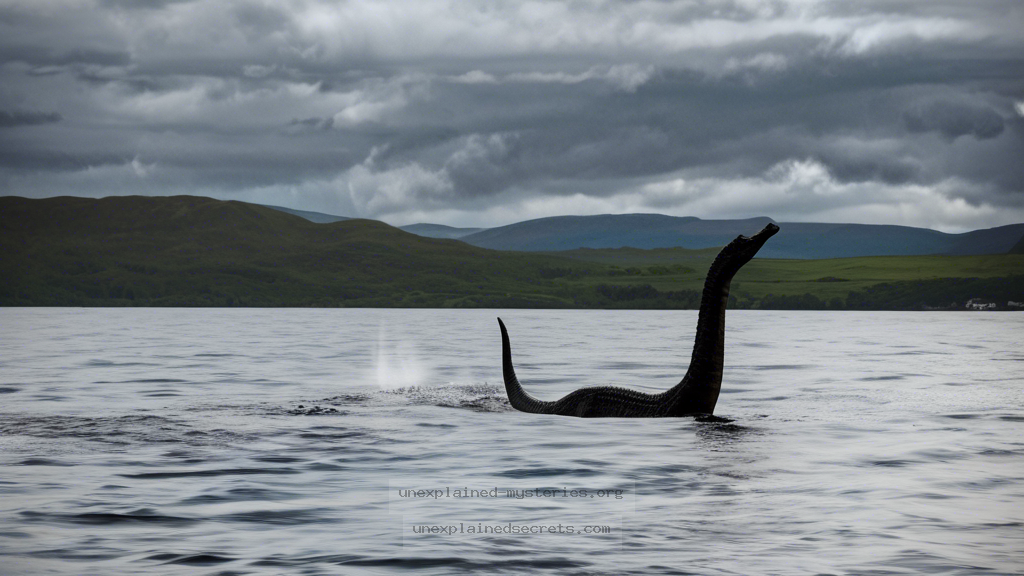What Secrets Do Sonar Detections of the Loch Ness Monster Hold for Cryptozoology?
What Secrets Do Sonar Detections of the Loch Ness Monster Hold for Cryptozoology?
The Loch Ness Monster, often affectionately known as “Nessie,” has captivated imaginations since it was first reported in the 6th century. As one of the most discussed cryptids, Nessie’s existence has been the subject of numerous sightings, documentaries, and scientific investigations. Among these methods, sonar technology has emerged as a key player in the search for evidence of this elusive creature. But what do the sonar detections really reveal, and how do they contribute to our understanding of cryptozoology? This blog post delves deep into sonar detections of the Loch Ness Monster, exploring their implications, the science behind them, and what they tell us about one of humanity’s most enduring mysteries.
Historical Context of Loch Ness Monster Sightings
The story of the Loch Ness Monster dates back centuries, with the first recorded sighting attributed to St. Columba in 565 AD. However, it wasn’t until the 1930s that Nessie gained international fame, particularly after the publication of the iconic “Surgeon’s Photo” in 1934. This photograph purportedly showed a large creature in the loch and fueled public interest and speculation about the monster’s existence. Over the decades, numerous alleged sightings have been reported, but the scientific community has largely dismissed these as hoaxes or misidentifications.
Despite skepticism, the legend continued to grow, leading to various scientific expeditions aimed at uncovering the truth. As technology advanced, so did the methods used to investigate Nessie’s existence. Sonar technology became a pivotal tool, offering a new perspective on the depths of Loch Ness and the potential for undiscovered life forms lurking below the surface.
Understanding Sonar Technology
Sonar, which stands for Sound Navigation and Ranging, is a technology that uses sound waves to detect and locate objects underwater. It operates by emitting sound pulses, which bounce off objects and return to the source, allowing for the mapping of underwater terrain and detecting objects such as fish, wrecks, or potentially, cryptids.
There are two primary types of sonar systems used in research: active sonar, which emits sound pulses, and passive sonar, which listens for sounds made by objects in the water. Both have been employed in various expeditions to Loch Ness, with active sonar often used to create detailed maps of the loch’s depths and contours, while passive sonar seeks to detect any living creatures’ sounds.
Significant Sonar Expeditions and Findings
Several notable sonar expeditions have sought to unravel the mystery of Nessie. One of the most significant was conducted by the Loch Ness Project in the 1980s, which utilized a sophisticated sonar system capable of scanning the loch’s depths. The team recorded numerous anomalies, including large, unidentified objects that appeared to move against the current.
Another major expedition took place in 2003, when researchers from the Academy of Applied Sciences used a combination of sonar and underwater cameras. They reported detecting a series of large objects, some of which were categorized as “large, moving anomalies” that did not resemble known aquatic life forms. These findings reignited interest in the Loch Ness Monster and led to further investigations.
Core Concepts and Theories Behind Sonar Discoveries
While sonar detections have provided intriguing evidence, they also raise questions about what these anomalies could be. Some theories suggest that the large objects detected could be oversized fish, underwater vegetation, or even submerged logs. Others speculate that they could be the remnants of ancient creatures, or even Nessie herself.
One fascinating theory posits that Nessie could be a surviving member of a prehistoric species, such as a Plesiosaur. This theory, while speculative, has captured the imagination of many cryptozoologists. The sonar data from various expeditions has sometimes shown shapes and movements consistent with large marine reptiles, lending some credence to this idea.
Practical Implications of Sonar Evidence
The sonar evidence collected from Loch Ness has significant implications for both cryptozoology and marine biology. For cryptozoologists, these findings invigorate the discussion surrounding the existence of undiscovered species and the potential for relict populations of ancient creatures. For marine biologists, they challenge existing knowledge of the ecosystem in Loch Ness, prompting further research into its biodiversity.
Moreover, sonar technology has practical applications beyond the search for Nessie. It can be used in conservation efforts to monitor fish populations, assess habitat health, and detect changes in the aquatic environment that may impact local wildlife.
Alternative Perspectives: Skepticism and Criticism
Despite the compelling nature of sonar findings, skepticism remains prevalent. Critics argue that sonar detections are often misinterpreted and that the anomalies can frequently be attributed to natural phenomena. For example, the sonar signals may reflect off rocks, underwater structures, or even bubbles, creating false positives.
Moreover, many scientists believe that the Loch Ness Monster is a myth perpetuated by human psychology—our propensity to see patterns in ambiguous stimuli and our desire to believe in the extraordinary. As such, while sonar technology can provide intriguing data, it is crucial to approach the findings with a critical mindset.
Common Misconceptions About Sonar and Loch Ness
There are several common misconceptions surrounding sonar technology and its application in the search for Nessie. One of the most prevalent is the belief that sonar can definitively identify unknown creatures. In reality, while sonar can detect anomalies, it does not provide conclusive evidence of what those anomalies are.
Another misconception is that sonar expeditions have consistently provided clear evidence of Nessie’s existence. While some sonar surveys have detected large, unidentified objects, these findings are often inconclusive and open to interpretation. It is essential for enthusiasts and skeptics alike to recognize the limitations of sonar technology.
Best Practices for Investigating the Loch Ness Mystery
For those interested in investigating the Loch Ness Monster, several best practices can guide the process. First, it is essential to approach the investigation with an open but critical mind. This means being willing to consider both anecdotal evidence and scientific data without jumping to conclusions.
Second, collaboration with experts in fields such as marine biology, sonar technology, and cryptozoology can enhance the investigation. Engaging with professionals can provide valuable insights and help to ground the research in scientific methodology.
Lastly, documenting findings thoroughly and sharing them with the broader community can foster discussion and further exploration of the Loch Ness mystery. Whether or not Nessie exists, the pursuit of knowledge is valuable in its own right.
Future Developments and Ongoing Research
The search for the Loch Ness Monster continues to evolve as technology advances. Future research may involve more sophisticated sonar systems, including 3D mapping technology and underwater drones equipped with cameras and sensors. These tools could provide unprecedented views of Loch Ness and its inhabitants.
Additionally, ongoing genetic studies may shed light on the biodiversity of the loch, potentially uncovering new species or relict populations. As our understanding of aquatic ecosystems expands, so does the possibility of discovering unknown life forms, whether they are connected to the legend of Nessie or not.
Conclusion: The Mystery of Loch Ness Endures
Sonar detections of anomalies in Loch Ness offer a fascinating glimpse into the depths of this iconic body of water, contributing to the ongoing debate about the existence of the Loch Ness Monster. While sonar technology has provided intriguing evidence, it also faces skepticism and raises more questions than answers. As we continue to explore the mysteries of Loch Ness, it is crucial to balance curiosity with critical thinking, embracing both the wonder of the unknown and the rigor of scientific inquiry. Whether Nessie is a product of folklore or a hidden reality, the search continues to inspire wonder and intrigue, reminding us of the mysteries that still lie beneath the surface.
Other Articles
Recent Posts
- What Happened to Flight MH370? The Conspiracy Theories That Still Haunt Us
- What Secrets Lurk Within the Walls of the Infamous Trans-Allegheny Lunatic Asylum?
- What Evidence Supports the Existence of Bigfoot in the Pacific Northwest?
- What Happened to the Indus Valley Civilization? Unraveling the Mysteries of Ancient Urban Life
- Can Telepathy Be Scientifically Proven Through Laboratory Evidence?







